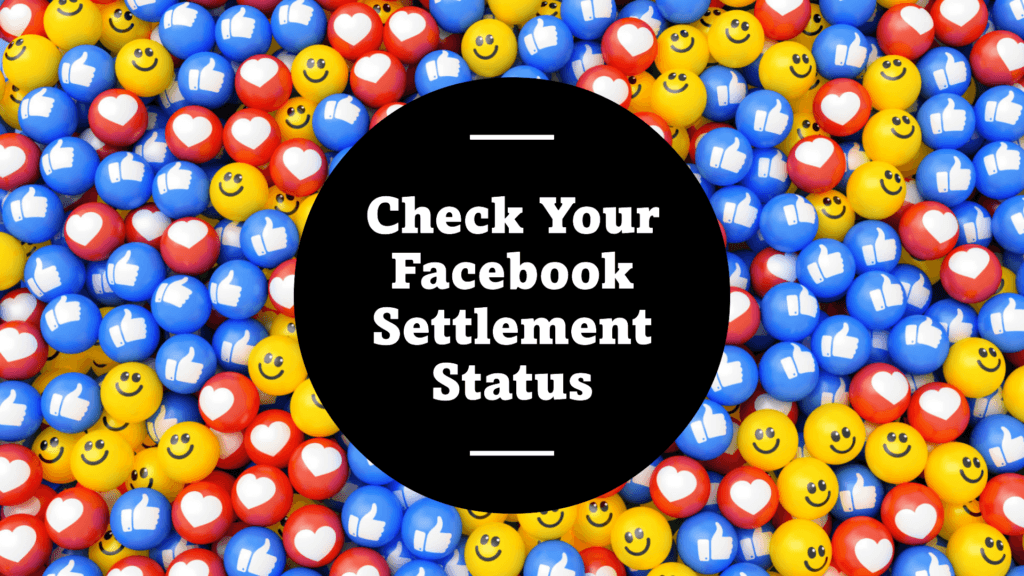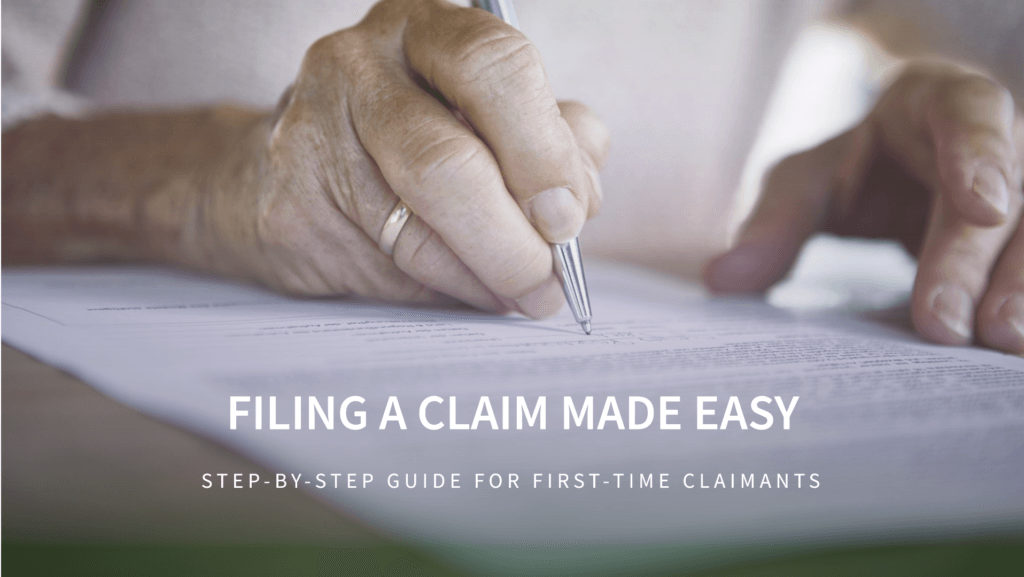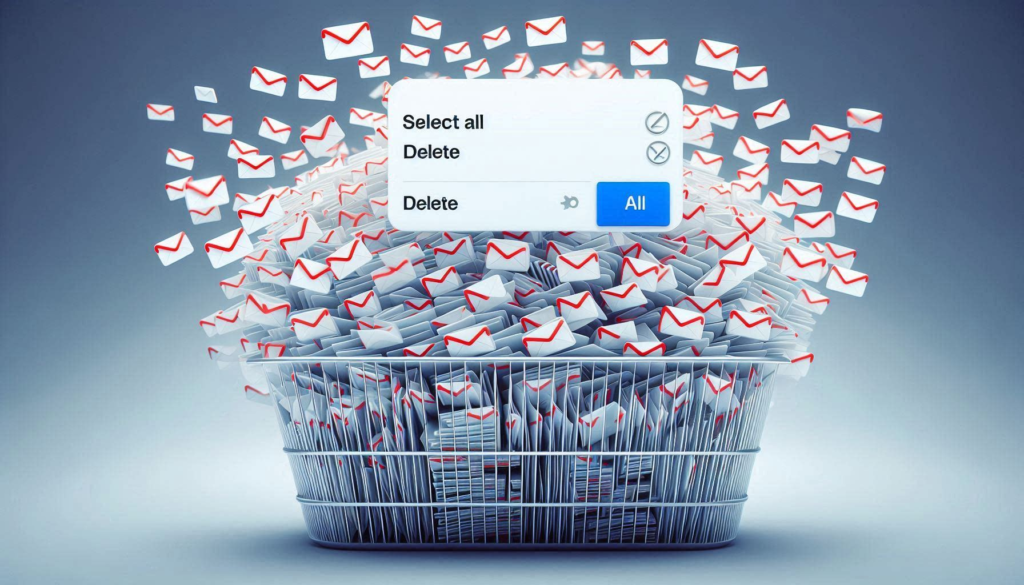Technology Moment, Checking Your Facebook Settlement Check Status. In today’s digital age, staying informed about financial matters has never been easier. With the recent Facebook Settlement Checks Status making headlines, it’s crucial to stay updated on the status of your claim. Technology has revolutionized how we track and manage such important processes, offering us real-time insights and convenience at our fingertips. Join us as we delve into the tools and resources available to ensure you’re always in the know about your Facebook settlement check status. Let’s harness the power of technology to navigate this process smoothly and confidently.
What is the Facebook Settlement?
The Facebook Settlement refers to the legal agreement reached between Facebook and plaintiffs who filed a class-action lawsuit against the social media giant. This lawsuit typically centers around allegations that Facebook violated user privacy rights or misused personal data. The settlement is a resolution where Facebook agrees to pay a certain amount of money to affected users without admitting guilt.
Why It’s Important to Check the Status
Understanding and checking the status of your Facebook settlement check is crucial for several reasons:
- Ensuring You Receive Your Entitlement: If you are eligible, you want to make sure you receive your fair share of the settlement. Checking the status helps confirm that your claim has been processed correctly.
- Avoiding Missed Deadlines: Settlement processes often come with strict deadlines for submitting claims and other paperwork. By keeping track of your status, you can ensure you meet all necessary timelines.
- Clarifying Any Issues: Sometimes, issues can arise during the claims process, such as missing information or disputes about eligibility. Regularly checking your status allows you to address these issues promptly.
- Financial Planning: Knowing when you might receive your settlement check can help you plan your finances. It provides a clearer picture of when you can expect the funds.
Table of Contents
Background of the Facebook Settlement Checks Status
The Facebook settlement refers to the resolution of several lawsuits that accused Facebook of mishandling user data and violating privacy rights. The most notable of these lawsuits stemmed from the Cambridge Analytica scandal in 2018. This scandal revealed that Cambridge Analytica, a political consulting firm, had accessed the personal data of millions of Facebook users without their consent. The data was allegedly used to influence political campaigns, including the 2016 U.S. presidential election.
The controversy over Cambridge Analytica brought to light broader concerns about Facebook’s data practices. Users and regulators became increasingly aware of how Facebook collected, shared, and utilized personal information. In response, multiple lawsuits were filed against Facebook, alleging that the company had failed to protect user data and had engaged in deceptive practices.
To address these claims, Facebook agreed to a series of settlements. The most significant of these was a $5 billion settlement with the Federal Trade Commission (FTC) in 2019. This settlement required Facebook to implement new privacy measures and subjected the company to stricter oversight.
In addition to the FTC settlement, Facebook also agreed to settle several class-action lawsuits. These settlements involved financial compensation to users who were affected by the data breaches and privacy violations. The settlement amounts varied, but the goal was to compensate users for any harm they suffered and to hold Facebook accountable for its practices.
The Facebook settlement is significant because it highlights the importance of data privacy and the responsibilities of companies that handle personal information. It also underscores the potential consequences for companies that fail to protect user data and the power of collective legal action in addressing widespread issues.
Understanding the background of the Facebook settlement is crucial for anyone looking to check the status of their settlement check. It provides context for why the settlement was necessary, how it came about, and what it aims to achieve in terms of user protection and corporate accountability.
Eligibility Criteria
When it comes to determining whether you’re eligible for the Facebook settlement checks, there are several key factors to consider. Here, we’ll break down these criteria in detail to ensure you understand whether you qualify.

Who is Eligible for the Settlement Checks?
- Facebook Users During a Specific Period
- To be eligible, you must have been a Facebook user during the timeframe covered by the settlement. This period typically corresponds to when the alleged data privacy violations occurred. For instance, if the settlement pertains to a specific data breach or misuse of user information, the dates of these events will be crucial.
- Residents of Specific Regions
- Often, settlements are limited to residents of certain countries or states. For example, if the settlement is the result of a lawsuit filed in the United States, only U.S. residents might be eligible. Similarly, some settlements may be restricted to residents of specific states or regions within a country.
- Individuals Affected by the Breach or Misuse
- Not all users will automatically be eligible; you may need to demonstrate that your personal data was part of the breach or misuse. This can include providing evidence that your information was exposed or misused as part of the incidents covered by the settlement.
How to Determine if You Qualify
- Review the Settlement Notice
- The official settlement notice will outline the specific eligibility criteria. This notice is typically sent to potential claimants via email, postal mail, or posted on a dedicated settlement website. Carefully read this document to understand the precise qualifications.
- Check Your Facebook Activity
- Verify your Facebook activity during the relevant period. This might involve looking at account statements, login records, or other documentation to confirm that you were actively using Facebook during the time in question.
- Identify Your Residency
- Ensure you meet the residency requirements specified in the settlement. This might involve providing proof of residence, such as a utility bill or driver’s license, from the time period covered by the settlement.
Documentation Needed
- Proof of Facebook Usage
- Gather any documents that can verify your Facebook usage during the specified period. This might include screenshots of your account activity, emails from Facebook, or other relevant records.
- Proof of Residency
- Prepare documentation to prove your residency if the settlement is limited to certain regions. This could be a government-issued ID, utility bills, or other official documents showing your address.
- Proof of Impact
- If required, collect evidence that your personal data was part of the breach or misuse. This might include notifications from Facebook about the breach, credit monitoring alerts, or other communications indicating that your information was affected.
How to Check Your Eligibility
Understanding if you’re eligible for the Facebook settlement check is a crucial first step.
Steps to Verify Eligibility
- Visit the Official Settlement Website:
- Start by visiting the official Facebook settlement website. This is the primary source of accurate and up-to-date information regarding the settlement. The website often includes a dedicated section where you can check your eligibility status.
- Read the Eligibility Criteria:
- On the settlement website, you’ll find detailed eligibility criteria. These criteria will specify who qualifies for the settlement checks. Common factors include being a Facebook user during a specific period, residing in a particular country or state, and being affected by the data breach or privacy issue at the heart of the settlement.
- Enter Your Information:
- The website typically has an eligibility checker tool where you can enter your personal details. This might include your full name, email address associated with your Facebook account, and sometimes additional information like your phone number or address.
- Submit Required Documentation:
- In some cases, you may need to submit additional documentation to verify your eligibility. This can include proof of your Facebook account, evidence of the data breach impact, or other relevant documents. Ensure that you have these documents ready before you start the verification process.
- Check for Confirmation:
- After submitting your information, the website will usually provide an instant confirmation of your eligibility status. If eligible, you will receive further instructions on how to proceed with your claim.
- Contact Customer Support if Needed:
- If you encounter any issues or have questions about your eligibility, most settlement websites offer customer support. You can reach out via email, phone, or live chat to get assistance.
Important Documents Needed
To verify your eligibility, you might need to gather the following documents:
- Facebook Account Information:
- This includes your login details and any correspondence with Facebook regarding the issue.
- Proof of Residency:
- Depending on the settlement terms, you might need to provide proof of your address. This could be a utility bill, lease agreement, or another official document.
- Evidence of Impact:
- If the settlement requires proof that you were affected by the data breach or privacy violation, gather any relevant emails, screenshots, or other documentation.
Tips for a Smooth Verification Process
- Double-Check Your Information:
- Ensure all the information you enter is accurate. Typos or incorrect details can delay your eligibility verification.
- Keep Copies of Submitted Documents:
- For your records, you should always retain copies of any documents you submit. If you need to follow up on your claim, this will be useful.
- Be Aware of Deadlines:
- Settlement claims usually have strict deadlines. Make sure you check the deadlines and submit your information well in advance.
How to Find Out If Your Facebook Settlement Check Has Arrived
Once you have determined your eligibility for the Facebook settlement and filed your claim, the next step is to monitor the status of your settlement check.
Online Methods
1. Visit the Official Settlement Website
The first and most reliable way to check the status of your Facebook settlement check is by visiting the official settlement website. This site is typically set up by the claims administrator to provide all necessary information and updates regarding the settlement process.
- Step-by-Step Instructions:
- Go to the official website: The URL for the settlement website is usually provided in the notification emails or letters you received when you filed your claim.
- Log in to your account: You may need to create an account or log in using the credentials provided during the claim submission.
- Check your status: Look for a section labeled “Check Your Claim Status” or something similar. Here, you will find updates on the processing of your claim and the expected timeline for receiving your check.
2. Use the Claim ID Number
If you were given a Claim ID number when you submitted your claim, you can use this number to check your status.
- How to Use Your Claim ID:
- Enter the Claim ID: On the settlement website, there will typically be a field where you can enter your Claim ID number.
- View your status: After entering your Claim ID, you should be able to see detailed information about your claim’s status, including whether it has been approved, the amount you are expected to receive, and when you can expect to receive your check.
3. Email Notifications
Most claims administrators will send periodic email updates regarding the status of your settlement check.
- What to Look For:
- Status updates: These emails will inform you of any changes or progress in the processing of your claim.
- Important dates: Keep an eye out for emails that provide specific dates for when you might receive your check.
Offline Methods
1. Contact the Claims Administrator
If you prefer offline methods or encounter issues online, you can directly contact the claims administrator.
- Steps to Contact:
- Find the contact information: This information can usually be found on the official settlement website or in any correspondence you’ve received regarding the settlement.
- Call or write: You can either call the claims administrator’s office or send a letter. Be sure to provide your full name, Claim ID (if applicable), and any other relevant information.
- Ask for an update: Request specific details about the status of your claim and any next steps you need to take.
2. Check Mail Correspondence
Sometimes, updates are sent via postal mail, especially if email isn’t an option.
- What to Look For:
- Letters from the claims administrator: These will contain updates about your claim status and any additional information needed from you.
- Official notices: Keep an eye out for official notices regarding the disbursement of settlement checks.
Common Issues and How to Resolve Them
1. Incorrect or Missing Information
Sometimes, claims are delayed due to incorrect or incomplete information.
- How to Fix:
- Verify your information: Double-check all the details you submitted with your claim.
- Update your information: If you find any discrepancies, contact the claims administrator to update your details.
2. Delayed Processing
Settlement checks can be delayed due to a high volume of claims or administrative issues.
- What to Do:
- Be patient: Understand that these processes can take time.
- Follow up regularly: Keep checking your status online or contact the claims administrator periodically for updates.
3. Lost Checks
In rare cases, checks might get lost in the mail.
- Steps to Take:
- Report the issue: Contact the claims administrator to report the missing check.
- Request a reissue: Ask for the check to be reissued and confirm your mailing address.
Common Issues and Solutions
When checking the status of your Facebook settlement check, you might encounter several common issues. Here’s a detailed look at these potential problems and how you can resolve them:
1. Problem: Difficulty Accessing the Online Portal
Issue: Some users might find it challenging to access the online portal for checking the status of their settlement check. This could be due to technical glitches, incorrect URLs, or browser compatibility issues.
Solution:
- Verify the URL: Ensure that you are using the correct and official URL for the settlement status check. Often, the official website will have clear instructions and links.
- Check Browser Compatibility: Try accessing the portal using different web browsers such as Chrome, Firefox, Safari, or Edge. Sometimes, certain websites function better on specific browsers.
- Clear Browser Cache: Clear your browser’s cache and cookies, as old or corrupted data can sometimes cause access issues.
- Contact Support: If the issue persists, reach out to the customer support team of the settlement administration for assistance. They can provide guidance and may resolve access problems directly.
2. Problem: Forgotten Login Details
Issue: You may have forgotten the login credentials required to check your settlement status, such as your claim number or password.
Solution:
- Use the Forgot Password Option: Most online portals have a “Forgot Password” or “Forgot Claim Number” option. Utilize these features to reset your password or retrieve your claim number.
- Check Your Email: Look through your emails for any communications from the settlement administration, as these often contain your claim number or instructions on how to retrieve it.
- Contact Support: If you’re unable to recover your login details through automated options, contact the support team for manual assistance.
3. Problem: Incorrect or Incomplete Information
Issue: You might receive an error message stating that the information you entered is incorrect or incomplete.
Solution:
- Double-Check Your Entries: Carefully re-enter your information, ensuring there are no typos or missing details. Pay special attention to fields like your name, claim number, and any identification numbers.
- Verify Documentation: Make sure you have the correct documentation on hand, such as the claim form or notification letter, to refer to the exact information required.
- Update Information: If your information has changed since you filed the claim (e.g., address or name change), update it through the portal or contact the support team to make necessary changes.
4. Problem: Claim Status Not Updated
Issue: Sometimes, users may find that their claim status hasn’t been updated for a long time, causing concern about the progress of their check.
Solution:
- Understand the Timeline: Familiarize yourself with the expected timeline for the settlement process. Some stages may take longer due to verification and administrative procedures.
- Check for Notifications: Look for any notifications or updates from the settlement administration that might explain delays or next steps.
- Contact Support: If you believe your status should have been updated by now, reach out to the support team for clarification and potential resolution.
5. Problem: Payment Not Received
Issue: Even after the claim has been approved, there might be delays or issues in receiving the actual settlement check.
Solution:
- Verify Payment Method: Ensure that your payment method (check, direct deposit, etc.) is correctly listed and has no issues.
- Check Payment Schedule: Confirm the payment schedule and understand that it may take time for funds to be processed and sent.
- Report Missing Payments: If you have waited beyond the expected time frame and still haven’t received your payment, report the issue to the settlement administration. They can investigate and provide updates on your payment status.
Timeline of the Settlement Process
The timeline of the Facebook settlement process is a crucial aspect to understand, as it helps claimants keep track of important dates and deadlines. Here’s a detailed breakdown:
Key Dates and Deadlines
- Initial Lawsuit Filing
- The process begins with the filing of the lawsuit. This marks the start of the legal proceedings against Facebook. Understanding this date helps contextualize the duration of the entire process.
- Preliminary Approval of the Settlement
- Once a settlement agreement is reached, the court gives preliminary approval. This is an important milestone as it indicates that the court finds the terms of the settlement fair and reasonable, subject to a final approval hearing.
- Notice to Class Members
- After preliminary approval, notice is sent to all potential class members. This notice includes details about the settlement, eligibility criteria, and how to file a claim. The timeframe for sending out these notices can vary, but it typically occurs within a few weeks to a couple of months after preliminary approval.
- Claim Filing Period
- Class members are given a specific period to file their claims. This period usually lasts several months, providing ample time for eligible individuals to submit their claims. It’s crucial to keep track of the start and end dates of this period to ensure your claim is filed on time.
- Objection and Exclusion Deadlines
- During the claim filing period, class members can also object to the settlement or request exclusion from the class. The deadlines for these actions are usually set shortly before the final approval hearing. It’s essential to submit any objections or exclusion requests by these deadlines to ensure they are considered.
- Final Approval Hearing
- The court holds a final approval hearing to determine if the settlement is fair, reasonable, and adequate. During this hearing, the court considers any objections and decides whether to grant final approval. The date of this hearing is typically set several months after preliminary approval.
- Final Approval and Distribution of Checks
- If the court grants final approval, the settlement becomes effective, and the process of distributing checks to eligible claimants begins. The timeline for this distribution can vary, but it generally occurs within a few months after final approval. Claimants should stay informed about when to expect their checks.
- Follow-Up and Resolution of Issues
- After checks are distributed, there may still be follow-up actions required, such as resolving any issues with undeliverable checks or handling disputes.
Expected Timelines for Checks
- Initial Distribution Phase
- This phase involves the initial mailing of settlement checks to eligible claimants. Depending on the size of the settlement class and the efficiency of the claims administrator, this phase can take a few weeks to several months.
- Addressing Undeliverable Checks
- Some checks may be returned as undeliverable due to incorrect addresses. The claims administrator will attempt to contact these claimants and resend the checks, which can add a few more weeks to the timeline.
- Final Distribution Phase
- After addressing any issues with undeliverable checks, the final phase ensures that all eligible claimants receive their settlement amounts. This final phase can take an additional few weeks to complete.
Impact of the Settlement
The Facebook settlement has significant ramifications for both Facebook users and the broader landscape of data privacy and online security. Understanding these impacts is crucial for anyone involved or interested in the case.
1. Financial Compensation for Users: One of the most immediate and tangible impacts of the settlement is the financial compensation provided to eligible users. This compensation serves as a form of restitution for the misuse of personal data. For many, receiving a check may not fully compensate for the potential breach of trust and privacy, but it represents a concrete acknowledgment of wrongdoing by Facebook.
2. Increased Awareness of Data Privacy: The settlement has heightened awareness about data privacy issues among the general public. Many Facebook users may not have been fully aware of how their data was being used or misused. This case has shined a light on the importance of data protection and has encouraged users to be more vigilant about their online privacy settings and the platforms they use.
3. Pressure on Tech Companies: The settlement has sent a clear message to other tech companies about the serious repercussions of mishandling user data. It sets a precedent that improper data practices can lead to substantial financial and reputational damage. This case may encourage other companies to reevaluate and improve their data privacy policies to avoid similar legal consequences.
4. Regulatory Changes and Legal Precedents: Beyond the immediate financial impact, the settlement has broader legal and regulatory implications. It could prompt lawmakers to introduce stricter data privacy regulations to protect consumers better. Additionally, the legal precedents set by this case could influence future litigation related to data breaches and privacy violations, shaping the landscape of digital privacy law.
5. Empowerment of Users: Users now have a clearer understanding of their rights regarding their personal data. The settlement has empowered users to demand better protection and transparency from the companies they interact with online. This empowerment can lead to more informed and assertive consumers who are unwilling to tolerate lax data security practices.
6. Changes in Facebook’s Practices: As part of the settlement, Facebook is likely to implement changes to its data handling and privacy practices. This could include more transparent data policies, enhanced security measures, and more straightforward user controls over personal information. These changes aim to rebuild trust and ensure better protection of user data in the future.
7. Market Reactions: The financial markets often react to significant legal settlements involving major companies. In this case, the settlement might affect Facebook’s stock price and investor confidence. Investors are likely to scrutinize the company’s future data practices and overall governance more closely, impacting Facebook’s market valuation.
8. Influence on Future Litigation: The Facebook settlement could influence how future class-action lawsuits are handled, especially those related to data privacy. Lawyers and legal experts will study this case to inform their strategies in similar lawsuits, potentially leading to more robust legal actions against companies that violate user privacy.
9. Shift in Public Perception: The settlement could lead to a shift in how the public perceives Facebook and other tech giants. While some users might appreciate the compensation and increased transparency, others might remain skeptical of Facebook’s commitment to privacy. This dual perception could influence user behavior and the company’s efforts to maintain a positive public image.
Legal Aspects of the Settlement
When discussing the legal aspects of the Facebook settlement, it’s crucial to understand the underlying legal processes and implications involved:
- Legal Background: This subsection would provide a brief overview of the legal context that led to the settlement. It may include references to the lawsuits or regulatory actions that prompted Facebook (now Meta) to agree to a settlement.
- Terms and Conditions: Detailing the terms and conditions of the settlement is essential. This involves what Facebook has agreed to do or change as part of the settlement agreement. It may include commitments related to user privacy, data handling practices, or other stipulations aimed at addressing the concerns raised in the lawsuits.
- Court Approval: Mentioning whether the settlement has received court approval is critical. Settlements of this magnitude often require judicial review and approval to ensure fairness to all parties involved, including affected users.
- Claims Process: Explaining any legal procedures or requirements for claimants under the settlement is important. This might include deadlines for filing claims, required documentation, or any other legal formalities users need to adhere to in order to receive compensation.
- Rights and Obligations: Clarifying the rights and obligations of claimants and Facebook under the settlement is necessary. This can include what users are entitled to under the settlement agreement, such as monetary compensation or changes in privacy practices, and what Facebook must do to comply with the terms of the settlement.
- Future Legal Implications: Discussing potential future legal implications of the settlement is also pertinent. This might involve how the settlement impacts future lawsuits against Facebook or how it could set precedents for similar cases involving data privacy and user rights.
- Compliance Monitoring: If applicable, mentioning how compliance with the settlement terms will be monitored or enforced can provide insight into the ongoing legal oversight of Facebook’s actions post-settlement.
How to File a Claim if You Haven’t Already
Filing a claim for the Facebook settlement can seem daunting, but it’s straightforward if you follow these steps. Whether you missed the initial announcement or just haven’t had the time to get around to it, here’s a detailed guide to help you file your claim:

Step 1: Determine Your Eligibility
Typically, eligibility depends on being a Facebook user during a specific period and being affected by the issues covered in the settlement. Check the settlement website for detailed criteria.
Step 2: Gather Necessary Information
You’ll need certain information to file your claim. This usually includes:
- Your full name
- Contact information (address, phone number, email)
- Facebook user ID or the email address associated with your account
- Proof of identity (if required)
Step 3: Visit the Official Settlement Website
Navigate to the official settlement website. This is typically provided in the settlement announcement or can be found through a reliable news source or legal website.
Step 4: Locate the Claim Form
On the settlement website, look for a link to the claim form. It may be labeled as “File a Claim,” “Claim Form,” or something similar. Click on this link to access the form.
Step 5: Complete the Claim Form
Fill out the claim form with accurate information. Here’s what you might need to include:
- Personal Information: Your name, address, and contact details.
- Facebook Account Details: The email address or phone number associated with your Facebook account.
- Proof of Identity: Some settlements may require you to upload an ID or other verification documents.
- Description of Impact: Explain how you were affected by the issue that led to the settlement. This could be a simple statement or a more detailed explanation depending on the requirements.
Step 6: Review and Submit
Before submitting, double-check all the information for accuracy. Make sure you haven’t missed any required fields.
Step 7: Confirmation
After submitting your claim, you should receive a confirmation email or a confirmation number on the website. Save this information as it serves as proof that you’ve filed your claim.
Step 8: Follow Up
Watch your email in case you receive any additional correspondence. Verification or more information may occasionally be needed.
Deadlines to Keep in Mind
Be aware of the filing deadline. Claims submitted after this date are usually not accepted. The deadline is typically mentioned in the settlement notice or on the settlement website.
Additional Tips:
- Check Spam/Junk Folders: If you don’t see a confirmation email, it might be in your spam or junk folder.
- Stay Updated: Visit the settlement website periodically for updates or any changes to the process.
- Legal Assistance: If you’re having trouble or if the process is unclear, consider seeking help from a legal professional.
Tips for Avoiding Scams
In any large-scale settlement process, there’s a possibility that scammers may try to take advantage of individuals seeking information or claiming their settlement benefits. These tips aim to help readers stay vigilant and avoid falling prey to fraudulent activities:
- Verify Official Communication Channels: Always rely on official sources of information regarding the settlement. Government websites, official court documents, or reputable news outlets are reliable sources for updates.
- Beware of Unsolicited Contacts: Scammers often reach out via email, phone calls, or social media claiming to assist with the settlement process. Be cautious of unsolicited communications and avoid sharing personal information without verification.
- Never Pay Upfront Fees: Legitimate settlement processes do not require upfront payments or fees to check your eligibility or receive settlement benefits. Avoid any requests for payment in exchange for settlement information or assistance.
- Double-Check URLs and Websites: When visiting websites related to the settlement or checking your eligibility online, ensure the URL is secure (starts with “https://”) and matches the official website of the settlement or relevant government agency.
- Protect Personal Information: Be cautious about sharing sensitive personal information, such as Social Security numbers or banking details, especially in response to unsolicited requests.
- Consult with Official Channels: If you receive suspicious communication or are uncertain about the legitimacy of a request related to the settlement, contact the official settlement administrator or legal counsel for guidance.
- Educate Yourself: Stay informed about common tactics used by scammers and current scams related to settlements. Awareness can help you recognize red flags and protect yourself from potential fraud.
- Report Suspicious Activities: If you encounter suspicious emails, phone calls, or websites related to the settlement, report them to the appropriate authorities, such as the Federal Trade Commission (FTC) or the settlement administrator.
What to Do If Your Check is Delayed
If you’re expecting a settlement check from the Facebook Settlement and it hasn’t arrived within the expected timeframe, there are several steps you can take to address the delay:
- Check Your Claim Status: Start by verifying the status of your claim. Visit the official website or contact the settlement administrator to confirm whether your claim has been processed and when the check was issued.
- Verify Your Address: Ensure that the address you provided during the claim process is accurate and up to date. Sometimes delays occur due to incorrect addresses or changes that haven’t been updated in the system.
- Contact the Settlement Administrator: If you haven’t received your check and it’s past the estimated delivery date, reach out to the settlement administrator directly. They can provide specific information about the status of your payment and any potential reasons for the delay.
- Check for Errors or Issues: Occasionally, delays can occur due to errors in processing or issues with the information provided in your claim. The administrator can help identify any such issues and guide you on how to resolve them.
- Follow Up Regularly: If you’ve contacted the administrator and are awaiting a response or resolution, follow up regularly to ensure that your case is being actively reviewed and addressed.
- Understand the Timeline: Be aware of the typical processing times for settlement checks. While delays can be frustrating, it’s essential to understand that these processes can take time due to the volume of claims and verification procedures involved.
- Seek Legal Advice if Necessary: In cases where delays persist or if you suspect there may be legal issues impacting the delivery of your settlement check, consider seeking legal advice. An attorney specializing in settlements and consumer rights can provide guidance on your options and rights.
Conclusion
Begin by summarizing the main points covered in the article regarding the Facebook settlement checks. This includes highlighting key eligibility criteria, methods to check status, common issues, and the overall impact of the settlement.
Reinforce why it’s crucial for readers to stay informed about the status of their Facebook settlement checks. Emphasize the benefits of being proactive in checking eligibility and status to ensure they receive any entitled compensation or benefits.
Encourage readers to take necessary steps based on the information provided. This could include checking their eligibility if they haven’t already, following up on their claim status, or taking steps to resolve any issues they might encounter.
Discuss potential future developments related to the Facebook settlement or similar cases that might arise. This could include changes in data privacy regulations, impacts on social media platforms, or broader legal implications.
End with a positive or thought-provoking statement related to the article’s topic. This could be a reflection on the importance of consumer rights, the evolving nature of digital privacy, or a call for greater transparency in online platforms.
FAQs About the Facebook Settlement Checks
What is the Facebook Settlement and why am I receiving a check?
The Facebook Settlement resolves a class-action lawsuit alleging that Facebook violated user privacy by using their data without proper consent. If you’re receiving a check, it means you were identified as a member of the affected class and are entitled to compensation based on the settlement terms.
How much money can I expect to receive from the Facebook Settlement?
The amount each claimant receives varies based on factors such as the number of valid claims submitted and the total settlement fund. Typically, settlement amounts are calculated to provide fair compensation to affected users, but exact figures can vary.
When should I anticipate getting my settlement check?
Settlement checks are typically distributed after the court grants final approval to the settlement and all appeals are resolved. The timeline for distribution can vary depending on the complexity of the case and the number of claims processed.
How can I verify the status of my settlement check?
You can check the status of your settlement check by visiting the official settlement website or contacting the settlement administrator. Provide your claim ID or other identifying information to receive the most accurate update on your check’s status.
What should I do if I haven’t received my settlement check yet?
If you haven’t received your settlement check within the expected timeframe, first verify your eligibility and ensure your claim was processed correctly. Contact the settlement administrator for assistance and provide any requested documentation to resolve the issue promptly.
Is it still possible for me to submit a Facebook Settlement claim?
The deadline to file a claim for the Facebook Settlement has typically passed. However, in some cases, extensions or allowances may be made for late claims under specific circumstances. Check the settlement website or contact the administrator for guidance.
What happens if my claim is denied?
If your claim is denied, you will receive a notice explaining the reasons for the denial. Common reasons include incomplete information, lack of eligibility, or failure to meet filing deadlines. You may have the opportunity to appeal the decision if you believe it was made in error.
Is the Facebook Settlement taxable?
Settlement amounts received from legal disputes like the Facebook Settlement may be taxable income. Consult with a tax professional or refer to IRS guidelines for specific advice on reporting settlement payments and any potential tax obligations.
How does the Facebook Settlement impact future privacy policies?
The Facebook Settlement may lead to changes in Facebook’s privacy practices and policies to enhance user data protection and transparency. Watch for updates from Facebook regarding any changes in how they handle user data moving forward.
Who can I contact for more information about the Facebook Settlement?
For more information about the Facebook Settlement, including questions about eligibility, the claims process, or the distribution of settlement checks, contact the settlement administrator directly. They can provide accurate and up-to-date information specific to your case.













